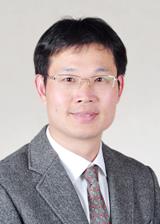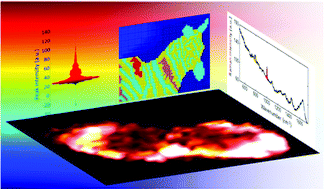Take a look at our most recent HOT Analyst articles, these are now free to access for the next few weeks!
Superposition of an AC Field improves the discrimination between peptides in nanopore analysis.
Elisabet Jakova and Jeremy S. Lee
Analyst, 2015, Advance Article
DOI: 10.1039/C4AN02180K
Versatile G-quadruplex-Mediated Strategies in Label-Free Biosensors and Logic Systems
Jiangtao Ren, Tianshu Wang, Erkang Wang and Jin Wang
Analyst, 2015,140, 2556-2572
DOI: 10.1039/C4AN02282C
Label-free and highly sensitive electrochemiluminescent biosensing using quantum dots/carbon nanotubes in ionic liquid
Wenwen Tu, Xuelin Fang, Jing Lou and Zhihui Dai
Analyst, 2015, 140, 2603-2607
DOI: 10.1039/C4AN02129K
Analysis of fast channel blockage: revealing substrate binding in the microsecond range
Igor Bodrenko, Harsha Bajaj, Paolo Ruggerone, Mathias Winterhalter and Matteo Ceccarelli
Analyst, 2015, Advance Article
DOI: 10.1039/C4AN02293A
The potential of chiroptical and vibrational spectroscopies of blood plasma for the discrimination between colon cancer patients and the control group
Michal Tatarkovič, Michaela Miškovičová, Lucie Šťovíčková, Alla Synytsya, Luboš Petruželka and Vladimír Setnička
Analyst, 2015, 140, 2287-2293
DOI: 10.1039/C4AN01880J
Drop-by-Drop Chemical Reaction and Sample Introduction for Capillary Electrophoresis
Fengming Chen, Ying Rang, Ying Weng, Luyao Lin, Hulie Zeng, Hizuru Nakajim, Jin-Ming Lin and Katsumi Uchiyama
Analyst, 2015, Advance Article
DOI: 10.1039/C5AN00040H
The role of lipid droplets and adipocytes in cancer. Raman imaging of cell cultures: MCF10A, MCF7, MDA-MB-231 compared to adipocytes in cancerous human breast tissue
Halina Abramczyk, Jakub Surmacki, Monika Kopeć, Alicja Klaudia Olejnik, Katarzyna Lubecka-Pietruszewska and Krystyna Fabianowska-Majewska
Analyst, 2015, 140, 2224-2235
DOI: 10.1039/C4AN01875C
Label-Free Free-Solution Nanoaperture Optical Tweezers for Single Molecule Protein Studies
Ahmed A. Al Balushi, Abhay Kotnala, Skyler Wheaton, Ryan M. Gelfand, Yashaswini Rajashekara and Reuven Gordon
Analyst, 2015, Advance Article
DOI: 10.1039/C4AN02213K
A step towards Mobile Arsenic measurement for surface waters
C. A. de Villiers, M. C. Lapsley and E. A. H. Hall
Analyst, 2015, 140, 2644-2655
DOI: 10.1039/C4AN02368D
Gold nanorod-based localized surface plasmon resonance platform for the detection of environmentally toxic metal ions
Subramaniam Jayabal, Alagarsamy Pandikumar, Hong Ngee Lim, Ramasamy Ramaraj, Tong Sun and Nay Ming Huang
Analyst, 2015, 140, 2540-2555
DOI: 10.1039/C4AN02330G



















